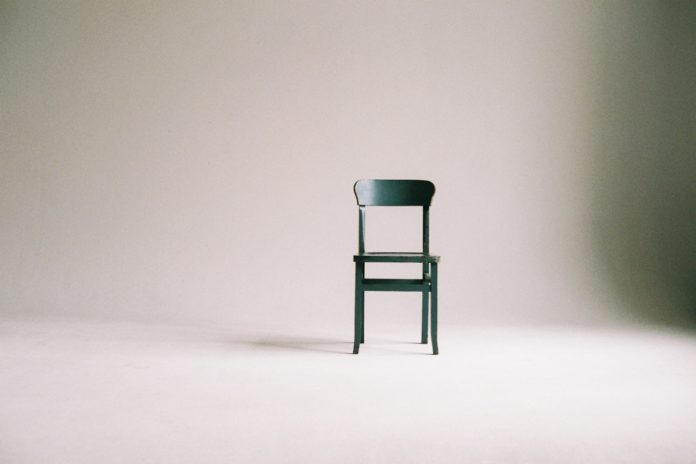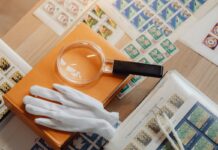Translated by V. Ramanan
How could you call a house without a chair a home? So it struck all of us in the house the same time. This issue was immediately placed on the agenda for family discussion.
Just the day before we had a family friend visiting us. He was a sub-judge and as our luck would he have it, he came not dressed in veshti and shirt but fully suited and booted. All we had in our house was a three-legged stool, which was itself just three-fourth of a foot high. Our grandmother used to sit on it when she whipped curd. Since our grandmother was a little ‘broad at the bottom’ our grandfather had asked the carpenter to make it a little broader than usual.
For want of any alternative we had requested his good self to take his seat on this three-legged affair. The sub-judge himself was a little thick-set; that caused him to place one hand on the edge of the stool before setting himself down on it . The problem with the stool was that if the weight fell on it not in line with its three legs, it would topple. This we the youngsters of the house had experienced many a time, when we would climb on it silently to steal the Ghee kept in the pot hanging in the chain from the overhead hook. Just as all of us were opening our mouth to warn the sub-judge, he fell with a big thud on the floor and rolled over. I , my younger brother and my kid sister could not help bursting into laughter. We held our sides and ran to the back of the house. More than the spectacle, the predicament of the elders and sight of the them struggling to hold back caused us to laugh breathlessly. Even to this day, my sister would mimic the way the sub-judge walked in and tried to sit on the stool with his one hand pressing down on its edge.
When we finally stepped into the house after laughing ourselves out, neither the stool nor the sub-judge was there. Could he have taken the stool with himself? , asked my little sister very curiously.
After this incident it was immediately resolved that we should get a chair made for our home. The practical difficulty in carrying out this resolve arose from the fact that there was no carpenter in our village and even if there was one, there was no chair that we could model ours upon.
“We could buy one from the town”, suggested my Pethanna (elder brother).
“It would not be sturdy enough”, my father shot it down.
Our Aunt interjected to say that the village nearby had a very good carpenter whose skills even the ‘Governor’ was seen praising, whereupon my mother was seen sneering at her, especially on the second part of her statement.
However my father immediately sent for the carpenter and the discussion soon veered around the wood with which the chair was to be made.
“We have to get it done in teak wood, only then will it be sturdy and also light enough to lift and shift around”, said the grandmother sitting on the floor with running her over hands over her stretched legs as if to gently massage them; her favorite pose.
At this moment, my mother’s brother who could also be my sister’s father-in-law walked in. We called him Father-in-law as he had potential for complex and multiple relationships. Pethanna ran in and brought out the stool for him to sit which triggered peals of laughter all round.
Father-in-law had a particular spot where he chose to sit. He would not change that place for any reason. It was against a corner pillar close to the kitchen of the house. It was his custom to sit with his back to the pillar, untie his tuft of hair, give it and his head a rub, and tie it up again. He would look around himself after this rigmarole whereupon Pethanna would derisively comment that he saw no coins drop off (his tuft).
Thus the Father-in-law was butt of all our jokes but betrayed no emotion that he minded them one bit. Only when we went a little overboard, we would draw the ire of our mother along with her none-too-serious admonitions that generally ended with ‘you donkeys’.
As the Father-in-law took his favorite seat, mother would go scurrying into the kitchen.
Sooner she would bring him butter milk laced with asafoetida , her hand holding the silver tumbler in her characteristic style that father would mimic behind her back, not without some malice and spite. The asafoetida laced butter-milk would make our mouth water.
We always thought that Father-in-law came for this butter-milk in the pretext of visiting us. Such was its taste of the butter milk made from the milk of our cow ; besides it was our considered opinion that he was the stingiest person in the village.
As a matter of fact, it was he who specially bought it for his sister (my mother) from Kannavaram market. Whenever he came to our house, the Father-in-law would always go round the cow running his hand over it in great fondness, uttering but a few words in its praise ( lest his own evil eye should befall the cow!) . This extreme fondness of his made my little brother and sister suspicious. They loved the calf so much that they were secretly worried that once the cow stopped lactating; both the cow and calf will be driven away by him to his home. This made them detest him just as much as they loved the calf. You must see the look on their faces when he drank the butter milk; if only looks could rip through or bite….
Sooner the Father-in-law also joined the discussion for he also wanted a Chair to me made for himself which in itself was quite welcome. His take was that Neem was the best wood for the chair and that it was an insurance against piles. Pethanna thought the wood of the Indian tulip tree was most suitable as it had good structure and took polish well.
Our elder sister was firm that only dark coloured wood was suitable as otherwise the Chair would sooner give off a pale and worn-down look. She recommended wood that was black or deep sugarcane red or the colour of the sesame oil cake. Finally, everybody agreed to what she said as all of us liked the idea of a black and shiny chair with well- formed front legs and curved hind legs.
When the two chairs arrived at our home, we could not take our eyes off them, They were identical and stood there like Ram and Lakshman. We could not decide which one to keep and which one to send to the Father-in-law’s. Finally we sent him one, with a lingering doubt if we had parted with the better piece.
All of us took turns at sitting on the chair holding on to it as much as our own realization that others were waiting for their turn would permit. Pethanna sat on it with relish rubbing the polished arm-rests. My kid brother and sister fought amongst themselves over th e time they got to sit on it.
The news of our chair spread in the village like wild fire. People came in small and large groups to see our chair. Some of them even sat on it and some lifted it to feel the reassuring girth in their hands before pronouncing their verdict , “Good job by the carpenter”.
Time just rolled by.
One fine day, rather night at 2 p.m. somebody knocked at the door. An important person of our village had just died and they wanted our chair. As the person who had died was also known to us, we went along without being fully awakened from sleep. The chair… it was a shocking sight..they had placed the dead body in the chair in the sitting pose.
It was our normal custom to prop up a dead boy in a sitting position on the floor against an old sack of straw slanted against a wooden mortar that is laid on its sides and effectively blocked from rolling away with some other object. From where did our villagers learnt the new style propping up in a chair ? – for our chair was soon to be regular fixture in all such ‘occasions’.
They promptly delivered the chair back after the funeral, but nobody was very keen to sit on it any more. Even the children looked at each other and stayed away from it. We asked our servant to take it to the backyard of the house and give it a through bath with a generous rubbing with straw and many buckets of water.
Days rolled by, the chair was lying in the porch but everybody shied away from it. Once when an odd visitor to our home preferred to sit on a dhurrie on the floor , we had to cajole him to take the chair. My kid brother and sister could not bear the sight and ran away into the garden, only to take a peep in turns to check if all was well with the gentleman!
Luckily for us, the next day , an old man of the village who came to our home and preferred the chair straight away. (Pethanna could not help remarking under his breath that he was rehearsing for the ‘show’).
It was how we slowly got over the fear of sitting on the chair. Even after we the elders started to sit on it, the children kept away, challenging each other to it, till they saw the girl from the next street plump her baby brother on the chair. The chair was not that dangerous after all.
It had become village custom to requisition our chair whenever somebody died in our village.Many a time it would be in the middle of the night when the villagers would disturb us in our sleep. We would part with the chair but not without inwardly grieving its fate and making a long face of it, which , unfortunately appeared as though we were joining them in their bereavement.
“Why do people kick the bucket at such odd hours ?”, our sister would moan.
“What a pity? Did we make the chair to be used in funerals?” , our elder brother sulked.
“It is all because of the inauspicious time that we chose to get the chair made”; this was the prognosis of our aunt.
Pethanna suddenly had an idea. We discussed it decided it to keep it amongst ourselves.
Once my mother asked me to deliver a message to the Father-in-law at his home.
Father-in-law was in his usual repose; sitting regally on his chair and indulging in his favourite pastime of chewing betel leaves. It was a sight to see him in his betel leaves chewing sessions; self-contented and deriving maximum pleasure in the activities around it. He would open the gold-colored box in which he kept the leaves and other ingredients ever so gently as if the mere act of opening and closing would break it asunder. The contents of the box would be laid out as if they are offerings to the gods. He would then give the betel leaves a generous rubbing but it was not his wont to prise out the protruding thick vein in the middle as is normally done; the miser in him would not permit casting away even such small amount of leafy matter.
Then he would hold the crushed betel nuts close his nose to smell and then blow through them with his mouth a few times. This last act was supposed to blow away the small worms and impurities that might be sticking to them . The container that held the chunam had not lost its sparkle inspite of being in his service for more than 15 years; a testimony to the fact that he was unsparing in his care for personal things. He would take elaborate care even when casting away the excess chunam that would be sticking to his fingers, for he never would swipe his fingers at random objects but at the very same container where he dug his fingers in. You would understand better if you compare the Eveready torch light we had at our home with his; ours with the paint peeled off in many spots and looking like a long time patient and his sparkling as if it were new.
The chair was reserved only for his use at his home. Nobody could sit on it. He would himself lift it and move it around carefully as if it were a clay water pot.
When he saw me, he greeted me and welcomed me in.
“How about some betel leaves ?”, he made a motion of offering me. only to withdraw in the same breath saying, “If school going boys take to eating betel leaves, fowls will chase them” – the ruse in our families to keep growing up boys from taking to this habit.
I told him what my mother had asked me to and returned.
That very night, there was a knock at the door. I woke up and with eyes still closed prodded Pethanna out of his sleep. When I opened the door, the villagers trooped in asking for the chair.
“Oh, You want the chair ?, It is now lying at our Father-in-law’s place”.
“He will surely give it to you, who will refuse when asked for such occasions”.
“Please go and ask him , but without quoting me” , Pethanna said with a glib tongue.
We sent them on their way to the Father-in-law’s and closed the door behind them smiling knowingly at each other.
In the meantime, our father disturbed in his sleep by all this, called out “What do they want?”
“What else?, they are looking for the bull, for their cows are in heat”, replied Pethanna.
Our father shifted himself in his bed and drew the blanket over his head.
It must be fun at the Father-in-law’s place, we could not help exulting.
Months rolled by. There was one occasion that had me visiting him at his place. He was as usual indulging in Betel leaves , but sitting on the floor.
“Where is the chair ?”, I was looking around for it and could not help being a little abrupt.
The Father-in-law looked at me in a deep gaze and restrained smile.
Then he said in a quiet tone , “I had asked the villagers to retain it for such exigencies that keep arising now and then, after all a chair is required on these occasions”.
I did not know what to say in reply. I ran back home to tell this news to Pethanna.
As I ran, my feet slowed down for unknown reasons.
Acknowledgements:
Above story republished with thanks from the Translator’s blog: https://words-are-weariness.blogspot.com/2012/12/chair-story-by-ki.html?showComment=1561633568756&view=sidebar
About the Author:
Rajanarayanan (Tamil: கி. ராஜநாராயணன்), popularly known by Tamil initials as Ki. Ra., is a Tamil folklorist and a prolific author. Rajanarayanan was born in Idaiseval village in 1922. His full name was “Rayangala Shri Krishna Raja Narayana Perumal Ramanujam Naicker”, which he shortened to Ki. Rajanarayanan. He dropped out of school in the seventh standard. He was appointed as a professor of folklore at Pondicherry University in the 1980s. He currently holds the title of Director of Folktales in the university’s Documentation and Survey Centre.
The novels Gopalla Grammam (lit. Gopalla Village) and its sequel Gopallapurathu Makkal (lit. The People of Gopallapuram) are among his most acclaimed; he won the Sahitya Akademi award for the latter in 1991. As a folklorist, Ki. Ra. spent decades collecting folktales from the karisal kaadu and publishing them in popular magazines. In 2007, the Thanjavur based publishing house Annam compiled these folktales into a 944-page book, the Nattuppura Kadhai Kalanjiyam (Collection of Country Tales). As of 2009, he has published around 30 books. A selection of these were translated into English by Pritham K. Chakravarthy and published in 2009 as Where Are You Going, You Monkeys? – Folktales from Tamil Nadu. Ki. Ra. is well known for his candid treatment of sexual topics, and use of the spoken dialect of Tamil language for his stories (rather than its formal written form).



















